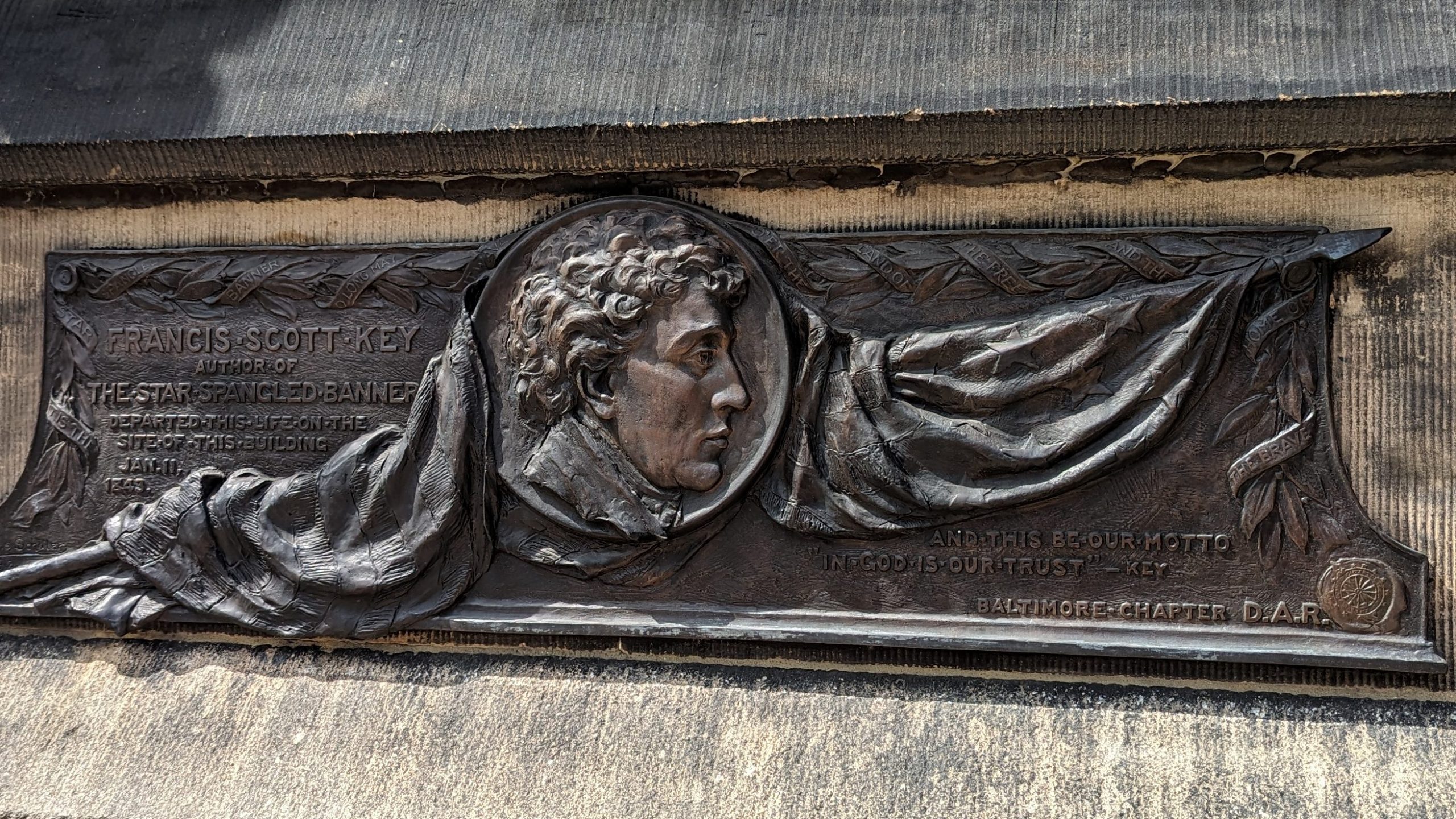As a kid, I remember on numerous family trips from our home in southern Pennsylvania passing by a historical marker in Carroll County, Md., that announced the location of the birthplace of Francis Scott Key. I also recall our visit to Fort McHenry and seeing the actual flag that flew over the facility during the bombardment by British forces that inspired Key to write the verses that became our country’s national anthem. So while we were passing through Frederick, Md., I was interested to pay my respects to Key at his monument and grave in the Mount Olivet Cemetery.

Francis Scott Key was born in 1779 at his family’s farm, Terra Rubra, in Keysville, Md. Keymar was then located in Frederick County, but the county’s borders were later adjusted and the farm is now in Carroll County. He studied at St. John’s College in Annapolis, and became a lawyer, rising to prominence handling cases such as Aaron’s Burr’s conspiracy trial and the Petticoat affair, arguing before the Supreme Court, and serving as District Attorney for the District of Columbia.
In 1814, Key was dining on the flagship of the British Vice Admiral in Baltimore Harbor in an effort to negotiate the release of a prisoner of war when British forces began their bombardment of Fort McHenry. Key was detained on the ship through the night as the attack was carried out. In the early dawn hours of the next morning, Key was moved by the sight of the American flag still flying above the fort and began to write a few verses of poetry on his experience. He completed the poem shortly after being released back to shore, and it was published in a local newspaper within a week with the title “Defence of Fort M’Henry.” The verse was suggested to be sung to the popular tune “Anacreon in Heaven” (also known as “The Anacreontic Song”) by English composer John Stafford Smith. Interestingly, Key had written a song back in 1805 set to the same unsingable tune, a celebration of American heroes of the First Barbary War entitled “When the Warrior Returns.”

Soon, Key’s latest work was being published across the country under a new title, “The Star-Spangled Banner.” And despite the difficulties in singing it, the song became increasingly popular and was officially named America’s national anthem in an Act of Congress signed by Herbert Hoover in 1931. Key’s original poem had four verses, but the second through fourth stanzas are largely forgotten today.
Key died in 1843 at his daughter’s home in Baltimore. Today, the site is home to the Mt. Vernon Place United Methodist Church, built in 1872. A plaque honoring Key is affixed to the exterior of the historic church, which we saw during our later visit to Baltimore.

Key was initially interred in Baltimore but was moved in 1866 to the Key family plot in Mount Olivet Cemetery in Frederick, Md. But this was not to be Key’s final resting place. In 1898, the Key Monument Associated raised funds for a rather impressive memorial (see photo at the top of this page) and Key and his wife were interred in a crypt at the base of the monument.
Sadly, Key was a slave owner and staunch anti-abolitionist, as well as a supporter of African colonization, giving pause to critics who point out the irony of Key’s words “land of the free.”







2 thoughts on “Francis Scott Key Memorial and Grave Site”